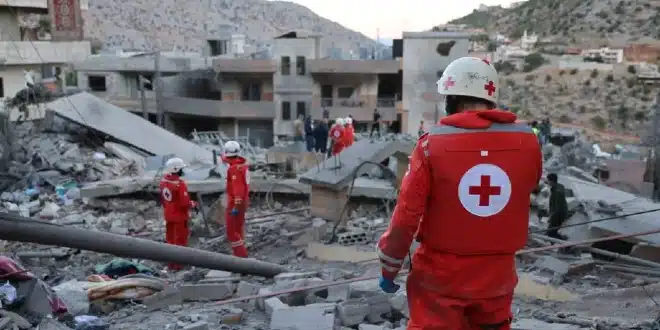On Friday, a series of Israeli airstrikes in southern Lebanon led to the death of one civilian woman and injuries to eleven others, despite an existing ceasefire agreement with Hezbollah. The attacks, focused on areas in and around Nabatieh al-Fawqa and the Iqlim al-Tuffah heights, marked one of the most intense escalations since the truce came into effect in late 2023.
According to statements from the Israeli military, the air raids were directed at underground infrastructure linked to Hezbollah. These targets included installations allegedly used to coordinate defensive and offensive operations. The strikes occurred in two distinct waves and involved the deployment of bunker-busting munitions, reportedly aimed at fortified positions in mountainous regions surrounding Nabatieh.
A state-run Lebanese news outlet reported that additional aerial attacks occurred throughout the day, including strikes between the towns of Ansar and Zrariyeh. An Israeli drone attack later in the day struck a residential building in Nabatieh al-Fawqa, destroying the top floor and causing the civilian casualties. The injured were transported to nearby medical facilities, while rescue efforts continued amid the wreckage.
Political Fallout and Background to the Conflict
Lebanon’s Prime Minister Nawaf Salam issued a firm condemnation of the strikes, describing them as direct violations of Lebanese sovereignty. He characterized the attacks as destabilizing and warned of their potential to undermine regional security. Salam’s remarks came less than 24 hours after a public address by Hezbollah deputy leader Sheikh Naim Qassem, who reiterated the group’s stance against foreign pressure and occupation, asserting Lebanon’s right to self-determination and defense.
Since the implementation of a ceasefire agreement on November 27, 2023, Israel has maintained a pattern of intermittent airstrikes, primarily aimed at southern Lebanon. These operations have focused on degrading Hezbollah’s capabilities, particularly its infrastructure near the Israeli border. However, Friday’s attacks were noted for their heightened intensity and expanded geographic reach, occurring north of the Litani River—a zone where Hezbollah’s armed presence is banned under the ceasefire terms.
The Israeli Defense Forces claimed in an official release that the latest strikes dismantled a critical Hezbollah-controlled underground complex, neutralizing its operational use. The military further stated that recent intelligence indicated Hezbollah’s attempts to rehabilitate facilities in the region, prompting a preemptive response targeting associated sites.
The broader conflict that preceded the ceasefire resulted in substantial casualties and destruction. Over 4,000 people were killed in Lebanon, and economic losses exceeded $11 billion due to widespread infrastructure damage. On the Israeli side, the conflict claimed 127 lives, including 80 military personnel. As part of the ceasefire arrangement, Hezbollah was required to relocate forces north of the Litani River, while Israel agreed to vacate certain positions in southern Lebanon. Despite this, the Israeli military continues to occupy five elevated positions it has designated as strategically vital.


